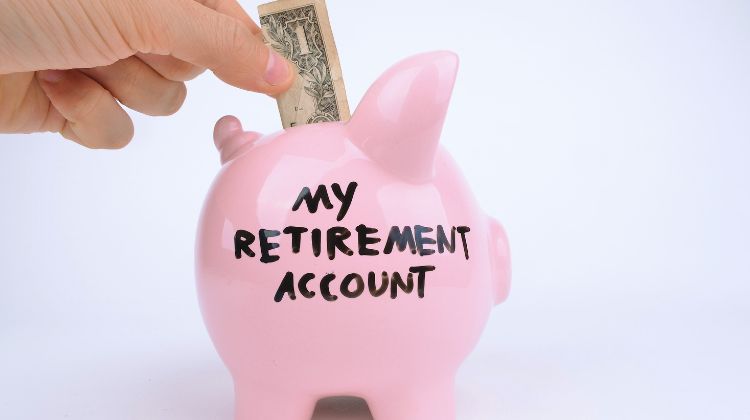Whispers of a downturn are growing louder, with “Trump policies trigger recession fears” becoming a prevalent concern. Do you feel a sense of unease, a worry that your bank account might be in for a rough ride?
The volatile stock market and continuous reports of trade wars contribute to this anxiety. These concerns, particularly the idea that Trump policies trigger recession fears, aren’t baseless. Let’s examine some data and figures to better understand the situation.
Table of Contents:
- Dissecting “Trumpcession” Indicators
- Decoding Trade Policies’ Impact
- Trump Policies Trigger Recession Fears – Decoding Fed Signals
- Taking the Politics Out of it All
- The Human Cost Of Recessions
- Conclusion
Dissecting “Trumpcession” Indicators
What defines a recession? It’s not always about one specific issue.
A recession signifies a significant, extensive, and sustained decline in economic activity. In the US, the National Bureau of Economic Research officially declares recessions.
Consumer Spending
Individuals like us are the primary engine of our economy. Consumer spending constitutes about 70% of the nation’s gross domestic product (GDP), as per Federal Reserve Economic Data, making our collective actions highly influential.
If people hesitate to make major purchases, businesses may also reconsider expansion plans. The Census Bureau’s retail data, however, indicates steady spending from January to February.
Consumer Confidence Drops
Consumer concerns significantly affect retail sales. The University of Michigan’s Survey of Consumers’ Index is a common gauge of “consumer mindset.”
This index experienced a substantial decline this month, reflecting a general downward trend. This drop suggests potential challenges ahead, with people feeling the squeeze from all the uncertainty around Donald Trump’s economic policies.
The Employment Signals
Employment figures offer more insight. The Sahm Rule indicator, which tracks trends, shows that recession risks decreased as of March, pointing to a currently stable labor market.
It’s beneficial to gather diverse perspectives. While this specific data suggests less concern about the unemployment rate, the economic landscape is constantly changing, and no data can perfectly forecast the future.
Decoding Trade Policies’ Impact
The global economy has become intricately interconnected over decades. Seemingly domestic policy changes can have ripple effects on international economies.
Rising Trade Deficits and Gold Imports
The US recently saw its highest-ever import volume in January, leading to a $153.3 billion trade gap, as reported by The Guardian. Many businesses seemed to be importing goods in anticipation of President Donald Trump’s tariffs.
Gold imports, particularly finished metal shapes, also played a significant role. The rise of gold imports indicates how some are trying to prepare, even if those efforts skew some typical numbers at the moment.
Experts attribute this to businesses rushing to beat the implementation of US tariffs, fearing that resulting trade gaps could shrink GDP. Businesses and consumers alike are experiencing the consequences of a global trade war.
Impacts on US Manufacturing Costs
Donald Trump’s policies have repercussions for the costs of US-based manufacturers, as indicated by data and business surveys reported by The Guardian. Increasing material costs due to supply chain disruptions raise long-term concerns about inflation and economic growth, impacting not only business owners but also everyday people by bringing prices higher on many consumer products.
With fluctuating prices and new pressures on businesses, it’s challenging to make accurate predictions. This is creating a sense of unease among business owners who have to make many hard choices to survive.
What Happens To Stocks And Markets
The repercussions of a potential market downturn are widespread. Regardless of whether you’re purchasing groceries or buying tech stocks, a hit to the stock market will impact your finances, where one warning sign can be a market wide decline in stock values.
After Trump’s election, the market initially surged. More recently, Trump’s policies were connected to a \$5 trillion market decline, raising concerns about a slowdown, according to Forbes. Markets can often behave irrationally.
Predictions and Real Data Points About a Possible Recession
Financial experts employ various methods to interpret mixed signals, such as stock markets behaving erratically. The yield curve, a useful tool, recently normalized after months of inversion, potentially signaling an impending recession.
Recessions are usually declared only after several months of a declining gross domestic product (GDP) pattern. GDP encompasses everything our nation’s workers produce each quarter, whether goods or services. This is what leads to a rise or fall in the share price of those companies that contribute.
Trump Policies Trigger Recession Fears – Decoding Fed Signals
With financial indicators fluctuating throughout Trump’s presidency, people closely watch the Federal Reserve. The Federal Reserve holds the responsibility to do all it can to improve economic growth, and reduce recession risk.
Experts believe that Federal Reserve activity offers crucial insights into whether current anxieties will lead to a “Trumpcession.” Let’s analyze this further.
Trump’s Pressure on the Federal Reserve
Interest rate adjustments impact many aspects of daily financial life, including budgets, retirement savings, and major purchases like homes and cars. This aspect is politicized, and now, even President Donald regularly discusses it.
Lower interest rates generally stimulate consumer spending and borrowing, fostering economic growth. But, increased economic activity can also lead to inflationary pressures if production can’t keep up.
Donald Trump frequently advocates for reshoring industries to create more jobs within the United States. This adds even more confusion about how his overall strategies can create the perfect situation to fuel growth.
Analyzing the Federal Reserve’s Actions and Outlook
As previously mentioned, Trump often pressures the Fed regarding interest rates. Jerome Powell, the Federal Reserve Chair, faces a challenging decision amid trade volatility and a fluctuating dollar.
A March CNBC Fed Survey involving fund managers and strategists indicated a recession probability exceeding 35%. Some prominent economists now believe a global trade war could push the economy into recession, as stated by Mark Zandi, chief economist at Moody’s Analytics.
Taking the Politics Out of it All
Despite media coverage, some Trump supporters view initial challenges as reasonable, part of a strategy for greater long-term growth for the United States. This goes against the common perceptions seen on networks such as Fox News, with different points of view being presented by Wall Street professionals.
Why The “Economy Detox” Might be Good, According to Supporters
Treasury Secretary Scott Bessent stated on NBC’s Meet The Press that it’s a “detox period.” He added that it “would have been much healthier if someone had put the brakes” earlier.
Trump himself attempted to reassure the public, telling the nation on Fox News about a transition, explaining that “what we are doing is very big.” This demonstrates Trump’s awareness of potential disruptions as part of a larger plan, however those potential disruptions may lead to much uncertainty around things such as wage growth and job openings being affected.
An Unstable World and Other Opinions
Trump’s policies and tweets on international matters impact the economy and economists’ views on US policy direction, especially when it involves things such as potential tariffs on imported goods. One analysis critiques the trade deficit mindset, stating the belief in achieving balanced “wins” may be flawed and hinder broader growth strategies for businesses.
The central question is whether people believe these actions will ultimately benefit the overall economy. The belief itself could become a self-fulfilling prophecy, influencing whether Trump policies trigger recession fears among key leaders, leading them to postpone their growth plans and bring prices higher on nearly all things, impacting things like living costs for many, many families.
The Human Cost Of Recessions
Financial indicators can signal whether an economy is expanding or contracting. However, behind these numbers are individuals who experience recession anxieties, affecting families and daily life in a substantial way.
Rising Concerns Among Consumers
Americans are also aware of these shifts, leading to concerns about their future. Recent surveys indicate a rapid decline, with many now anticipating an economic recession within the next 12 months. A recent survey shows bipartisan concerns.
This declining sentiment is significant. Consumers account for over two-thirds of the US economy, so families reducing their spending impacts businesses across various sectors.
Fluctuating markets can sometimes increase default rates, particularly affecting vulnerable communities. Reports indicate that 6.6% of subprime borrowers were behind on auto loan payments, as vehicle prices, borrowing costs, insurance, and maintenance costs have risen considerably. It shows a widespread decline in confidence.
Comparing Recession Signs: Are They Linked?
How do these factors relate to concerns about Trump policies triggering a recession? It appears that a combination of financial pressures, concerns about job security, and overall negativity contributes to recession worries, rather than any single policy or indicator. The psychological component of all this ends up impacting things in the long term.
Here’s a summary of how many people currently connect these elements:
| Indicator | Status | Implication of Possible “Trumpcession” |
|---|---|---|
| Consumer Confidence | Decreasing Significantly | Consumers anticipating economic weakness may reduce spending, impacting growth. If this confidence continues to decline for several consecutive months, it raises concerns about broader financial stability. |
| Consumer Spending | Mixed Numbers (though worry if declines start and do persist) | Consumers reacting to negative headlines, such as stock market volatility, could negatively impact the US economy and indicate a larger recession. If consumer spending significantly and consistently declines over an extended period, it could contribute to the conditions that officially define a recession. |
| Yield Curve Inversion | Inversion Returned | Inversions often precede actual recessions, so they are not entirely reliable indicators. The worry about a possible market downturn due to perceived instability and economic policy can make this metric even less reliable. |
| Gold Imports | Huge Rise | This caused skewed early numbers, particularly for Gross Domestic Product, as many businesses rushed to import goods before tariffs, increasing concerns about an economic slowdown and a potential global recession. |
| GDP Forecast Numbers | Predictions Plummeting | A recession is defined as at least two consecutive quarters of declining domestic output, or negative GDP. While we haven’t seen consecutive “bad quarters” yet, the declining outlook is cause for concern, especially after growth forecasts initially projected a 2.8% increase for the US, but suddenly, reports like Forbes’ coverage of the GDP shift showed a substantial drop, even with negative output forecasts, raising concerns. |
Despite the mixed signals and diverse opinions regarding Trump’s policies, many individuals are experiencing genuine “recession fears” about their immediate personal futures, not just business-related decisions. These concerns have to be taken very seriously by those who wish to get a grasp on where we are and where we’re going.
Conclusion
Recessions have numerous indicators, and economic experts hold vastly different viewpoints. The key factor in a potential downturn seems to be the strong influence of everyday beliefs and perceptions, in addition to purely economic data. The Federal Reserve’s future decisions can play a critical role.
The interconnected nature of trade decisions causing anxieties among consumers and businesses can create a snowball effect. There is also the possibility that the current “Trump policies trigger recession fears” phenomenon has a tangible basis and are legitimate concerns about the future state of not only America’s, but also the world’s largest economy.








Reader Interactions